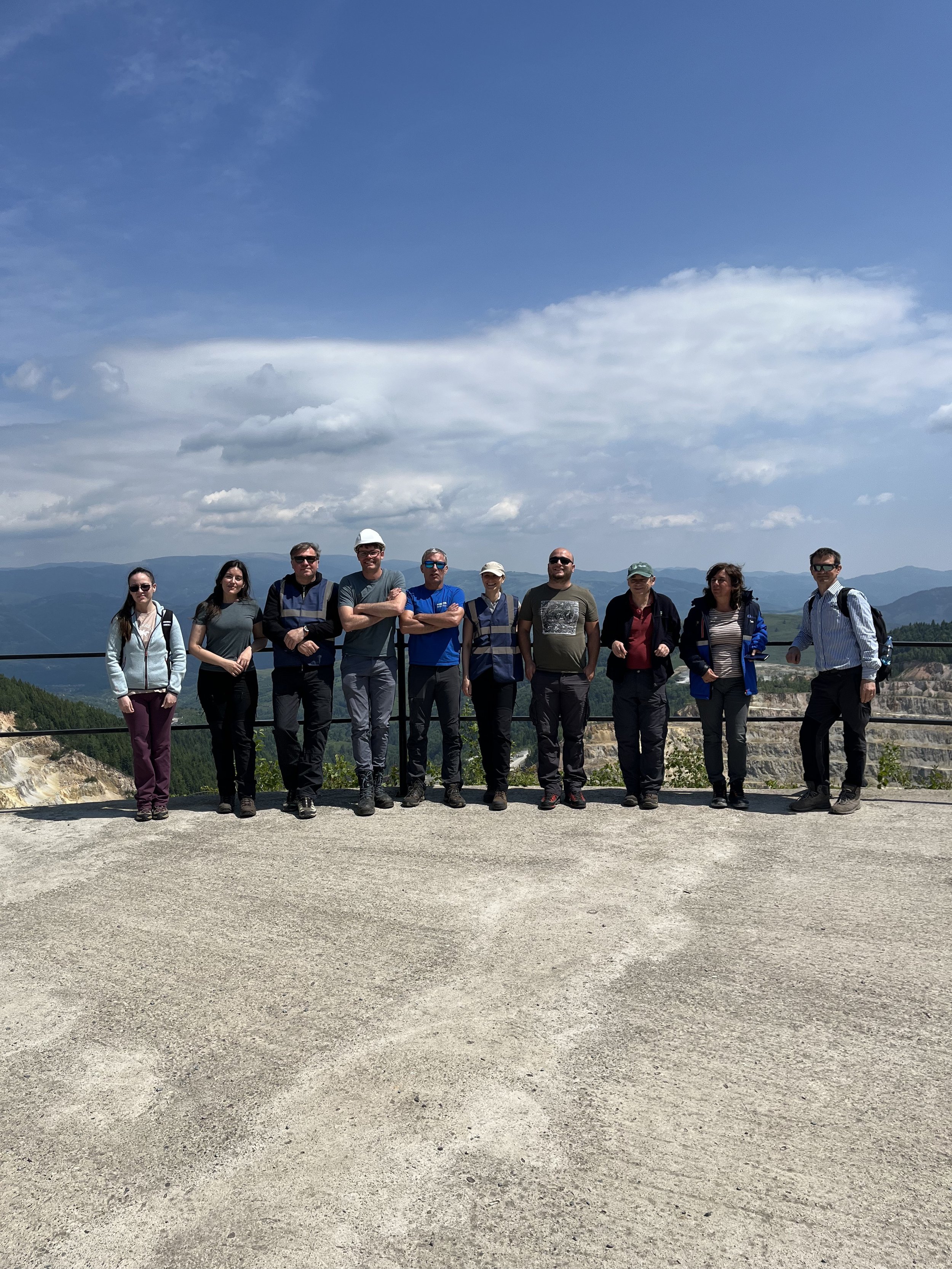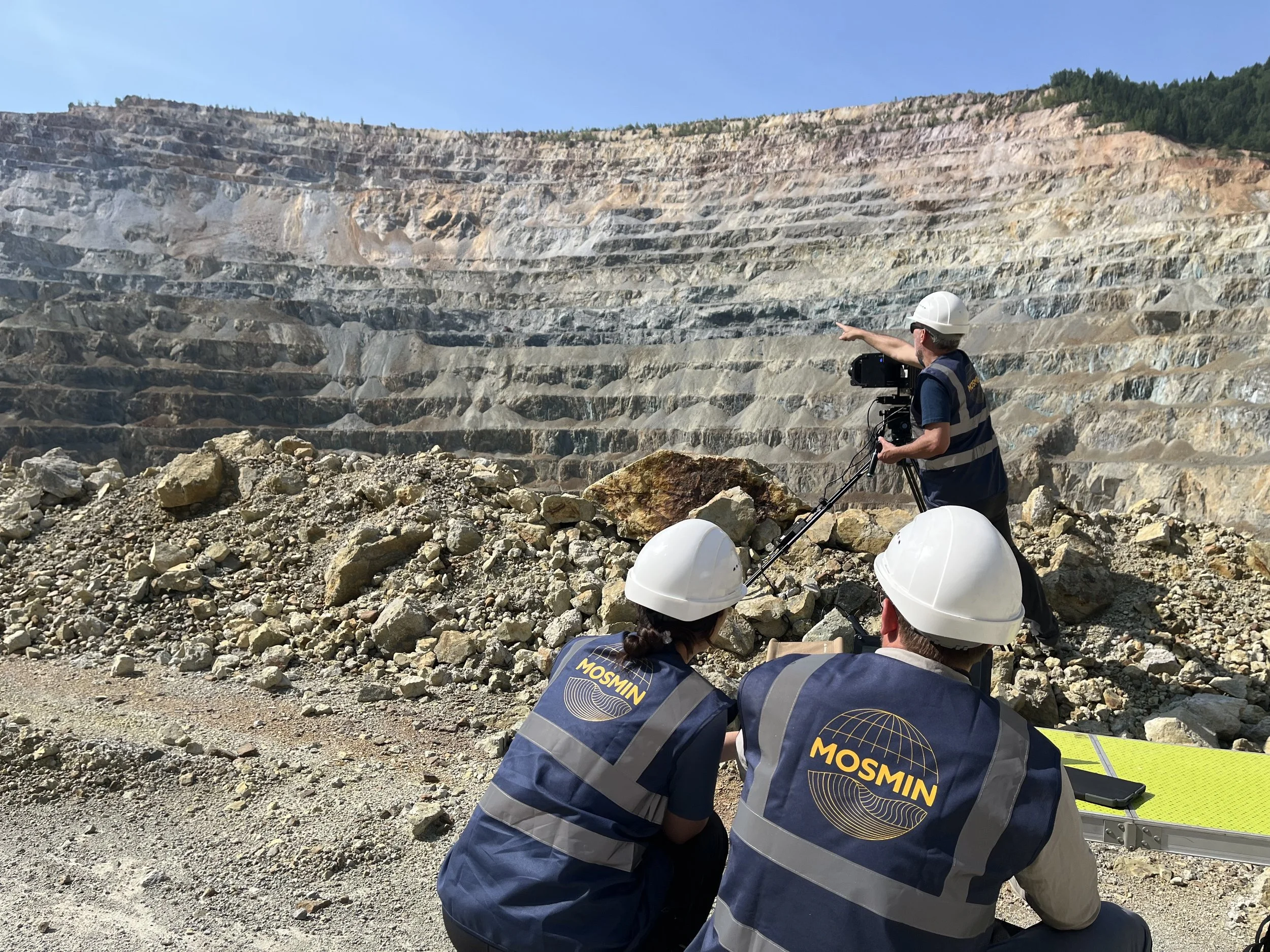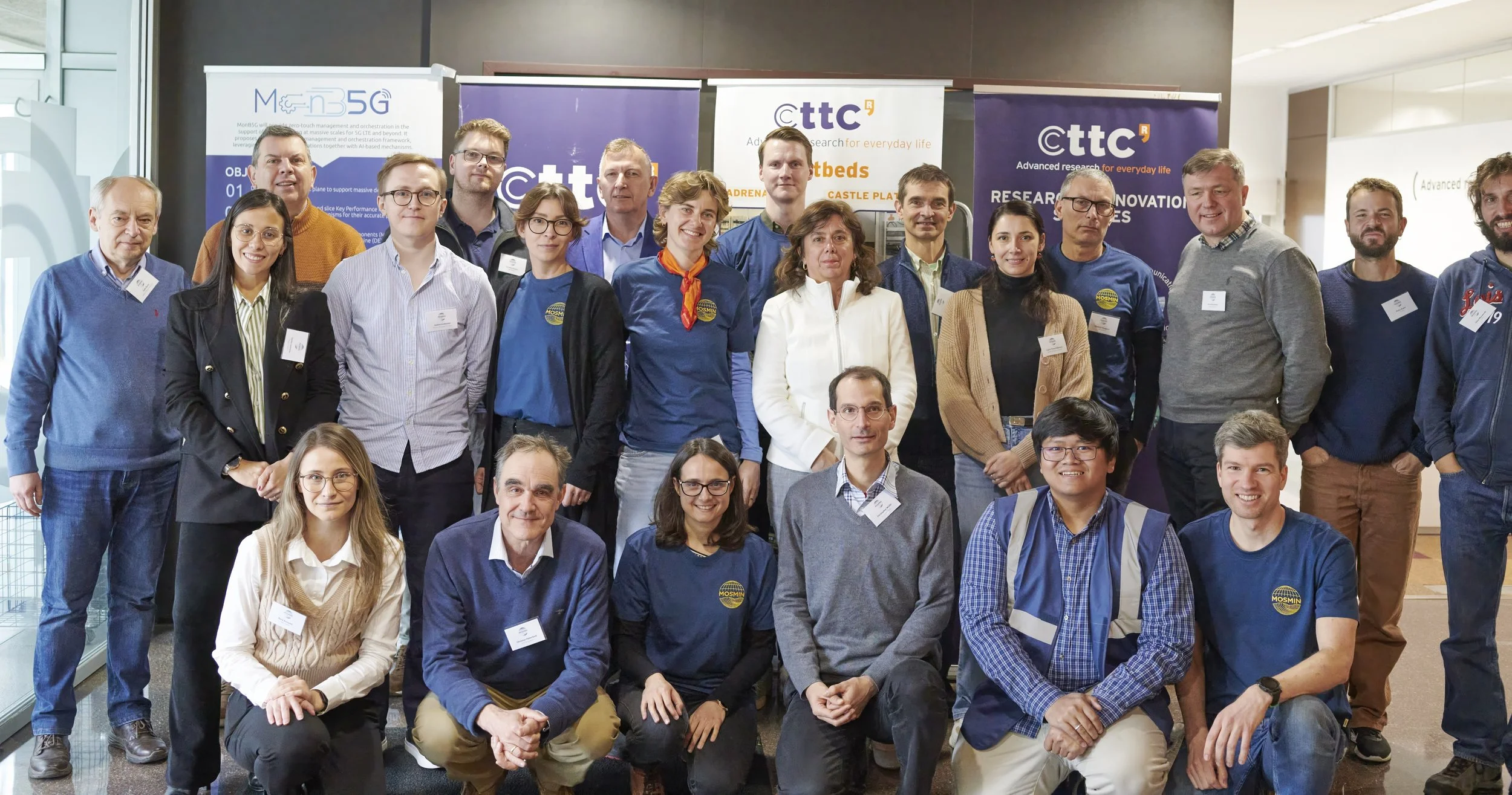MOSMIN in Action: Tackling Mine Waste and Environmental Risk
Integrated AMD Monitoring
Acid mining drainage (AMD) happens when rain or water flows over rocks that contain sulfide minerals, often found in mine waste. This causes a chemical reaction that creates acidic water, which can dissolve heavy metals like iron, copper, or lead. The polluted water can then leak into rivers, soil, or groundwater, harming ecosystems, drinking water, and farmland. AMD can last for decades if not managed properly, making it a major environmental challenge for mining operations.
In June, the MOSMIN team joined forces at the Roșia Poieni copper mine in Romania to test new methods for monitoring mine waste and environmental impact. Working alongside GeoKinesia, Babeș-Bolyai University, CupruMin and HZDR, the team used a combination of drones, satellite data, and ground surveys to map areas at risk of acid mine drainage (AMD) and explore ways to recover valuable materials from mine waste.
1. Identifying AMD Risk Zones
Using hyperspectral data from the EnMAP satellite, abundance maps were produced to show the distribution of mineral alteration facies across the site. Each facies corresponds to a different level of AMD risk. These maps were supported by field spectra collected from open pits and waste dumps, creating a reliable reference for future monitoring.
2. Mapping AMD Pathways with Drone Topography
A high-resolution photogrammetric Digital Elevation Model (DEM), created from UAV imagery, was used to simulate surface water flow. The resulting stream network highlights potential AMD runoff routes, guiding targeted field inspections, water sampling strategies, and the placement of monitoring infrastructure.
3. Tracking Active AMD Processes
To monitor AMD activity over time, the Acid Mine Water Index (AMWI) was derived from Sentinel-2 and PlanetScope satellite imagery. These data were paired with time series of precipitation, temperature, and field measurements of pH and iron levels. The AMWI helped identify high-acidity zones in runoff streams, with satellite results verified by on-the-ground sampling.
4. Assessing Environmental Impacts on Vegetation
A ‘Year of Disturbance’ map, generated using Landsat NDVI time series and LandTrendr algorithms, revealed when and where vegetation loss occurred - mostly due to mine expansion. Other vegetation indicators like lagged NDVI-precipitation correlations and trends in plant phenology (e.g., Start of Season) offer additional insight into long-term ecological stress and land rehabilitation effectiveness.
Turning Data into Action
Along with the fieldwork carried out in Zambia, these case studies highlight how MOSMIN’s multi-sensor approach can deliver actionable insights across the mining value chain—from identifying environmental risks and predicting AMD pathways, to assessing infrastructure stability and guiding remediation planning.
By leveraging scalable Earth observation technologies and integrating them with on-site expertise, MOSMIN is moving closer to its goal: transforming innovative monitoring tools into operational solutions that support safer, cleaner, and more sustainable mining worldwide.
Strengthening Collaboration
MOSMIN’s Second Consortium Meeting
At the beginning of March, the MOSMIN project partners also convened at the Centre Tecnològic de Telecomunicacions de Catalunya (CTTC) in Barcelona for our second in-person consortium meeting. Representatives from each work package came together to refine our shared vision, strengthen collaboration, and align efforts as we continue to push the boundaries of mine waste monitoring technologies.
By combining our multidisciplinary expertise and deepening our understanding of each partner’s unique contributions, we were able to reflect on the broader objectives of our work and ensure that our research activities remain aligned with our overarching vision: developing scalable, integrated services for enhanced mine waste monitoring.
Challenges still lie ahead for MOSMIN as it transitions from experimental research to operational solutions — but with a unified sense of purpose and strong collaborative spirit, we’re well-positioned to develop products and services that can make a lasting impact.






















